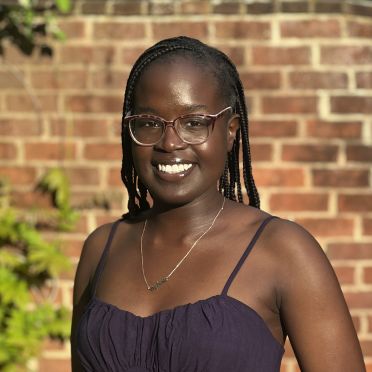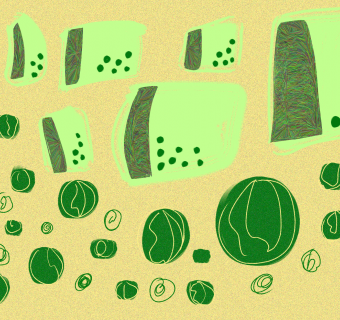Author Sarah J Maas has been hinting with increasing frequency at releasing yet another installation to the A Court of Thorns and Roses (ACOTAR) series. Since publishing the first book, the original A Court of Thorns and Roses in 2015, Maas has released four more titles as part of the series, with the most recent, A Court of Silver Flames, dropping in 2021. For those of you who have read the series, this should come as no surprise; Maas integrated the ACOTAR characters into the latest release in her Crescent City series, and left too many plotlines unfinished to count in the last book for there not to be another. I predict the announcement is coming before the end of the year. For those of you that are unfamiliar with these books — here’s the premise of the first one, as stated by the official description on Audible:
Feyre Archeron, a 19-year-old huntress, is kidnapped and brought to the faerie lands of Prythian after she kills a faerie wolf. Her kidnapper is Tamlin, a High Fae and one of the seven High Lords of Prythian.
Let me preface this article of critique by saying that I really wanted to love the series. The summer after I graduated high school, I set out to start reading for pleasure again, after being too burned out for most of high school to even consider the idea. My friends, who had been knee-deep in “Booktok” for years now, recommended A Court of Thorns and Roses. I bought the series in one bulk pack, and got on with it.
If I sound professional now, full disclosure that this will not be the case for the rest of this piece. Before diving into the first book, I knew two distinct spoilers:
that the endgame love interest for the main character, Feyre, was not the love interest in this book at all, but instead some guy named Rhysand
AND
- that these books were almost comically full of sex.
This is where my disdain for these books stems from: Sarah J. Maas doesn’t present the bad as bad. It is one thing to write complex characters, or characters that are morally gray, but it is the responsibility of the author, especially in a series so heavily rooted in romance and sex, to convey to the reader that this is not ideal.
In the first book, after being whisked away to the Spring Court, Feyre begins to live there, where she eventually falls in love with Tamlin. Meanwhile, the entirety of the rest of the Courts (Summer, Autumn, Winter, Dawn, Day, and Night) are trapped under a mountain under the rule of an evil queen. Tamlin, who brought the curse onto them by rejecting the queen’s advances, has 50 years to find a human girl who hates faeries to declare her love for him. The aforementioned “some guy named Rhysand” is actually the High Lord of the Night Court, who is also trapped against his will and functions as a slave that does all of the queen’s bidding.
Feyre spends the whole first book in love with the High Lord of the Spring Court, Tamlin, but Rhysand is still quite present — and his treatment of Feyre is so disgusting that I was completely flabbergasted by the spoiler that they end up together. The Booktok diehards might crucify me for saying this, but Rhysand spends the entire first book severely abusing Feyre, and the abuse is never addressed explicitly as such. Tamlin is also quite abusive, but this is not addressed until much later in the series, leaving his behavior entirely and horrifically unchecked for the first book. And by now, if you haven’t ever picked up one of these books, you’re probably thinking that I am exaggerating, and it couldn’t possibly be that bad considering the mass popularity of these books. I’m not.
For example, the first “romance” scene in the series — because it is portrayed as such — occurs when Tamlin, under the influence of special, horny magic, backs Feyre up into a corner and assaults her. They do not have an established relationship at this point, and even if they did, in my opinion, it would still be very questionable considering Feyre had absolutely no clue what was happening. This could have been a moment for Maas to make Feyre call Tamlin’s behavior out, and demand for him to do better, but instead she has Feyre romanticize this behavior as “some feral part of him” wanting her.
This is where my disdain for these books stems from: Sarah J. Maas doesn’t present the bad as bad. It is one thing to write complex characters, or characters that are morally gray, but it is the responsibility of the author, especially in a series so heavily rooted in romance and sex, to convey to the reader that this is not ideal. If I had gotten my hands on these books when they were first coming out, when I was in middle school, who knows the damage they could have done to my perception of a healthy relationship. These books are definitely not for middle schoolers — or young adults, or anyone impressionable, really. An author has the liberty to write about an abusive relationship, or a less than ideal relationship, or a relationship where the individuals involved are fundamentally incompatible and not good for each other. However, none of these categories should ever be presented to readers as something ideal in the way that Maas does.
I don’t care if a young adult reads a book with sexual content in it. What I do care about is reading books that portray relationships in a healthy manner, with model love interests, model sex, and them being able to tell the difference between love and abuse.
Maas introduces the concept of mates (which I think is tacky, but that’s for another day), which are fated bonds between individuals that function to ensure that they are perfect for each other in every way imaginable. She tries to argue that not all mates actually make a healthy relationship, but undermines her own point by portraying every single mated pair in the series as a form of ideal relationship. Rhysand at least somewhat suspects Feyre is his mate for the first book, before truly realizing it at the end. So you can imagine how flabbergasted I was, knowing that he and Feyre would end up together, that their first real interaction was him holding her under mind control in front of Tamlin and explicitly reading out all of her most intimate thoughts to anyone within earshot just to scare him. I couldn’t help but be shocked at how major of a violation that was to the person that he should have been protecting.
And it gets worse! When the 50 years Tamlin has to break his curse runs out, and he and the Spring Court get dragged under the mountain with everybody else, Feyre shows up and is told she has to complete three trials to free them. Between trials, she is kept in a prison cell, where Rhysand bursts into the prison cell, puts his hands on her infected arm, and proceeds to slowly break it until she consents out of pain to make a deal with him to ensure her survival. After this, Rhysand forcibly drugs her in her prison cell and then has her to suggestively dance with him during the queen’s parties. I genuinely don’t understand how anyone could read this and then turn around and like him — like his and Feyre’s relationship — after this. And personally, I’m tired of having ACOTAR fans get mad at me when I mention that their “book boyfriend” Rhysand is not the epitome of the perfect man at all, but instead a tall, dark, and handsome abuser.
I only covered book one here for length’s sake, but the rest of the series does not get any better. I don’t care if a young adult reads a book with sexual content in it. What I do care about is reading books that portray relationships in a healthy manner, with model love interests, model sex, and them being able to tell the difference between love and abuse. The damage of the ACOTAR series has already been done — it’s been out in the world for years, with the first book having sold over 13 million copies alone. The least you can do, Sarah, is put the pen down and not subject anyone else to another.







